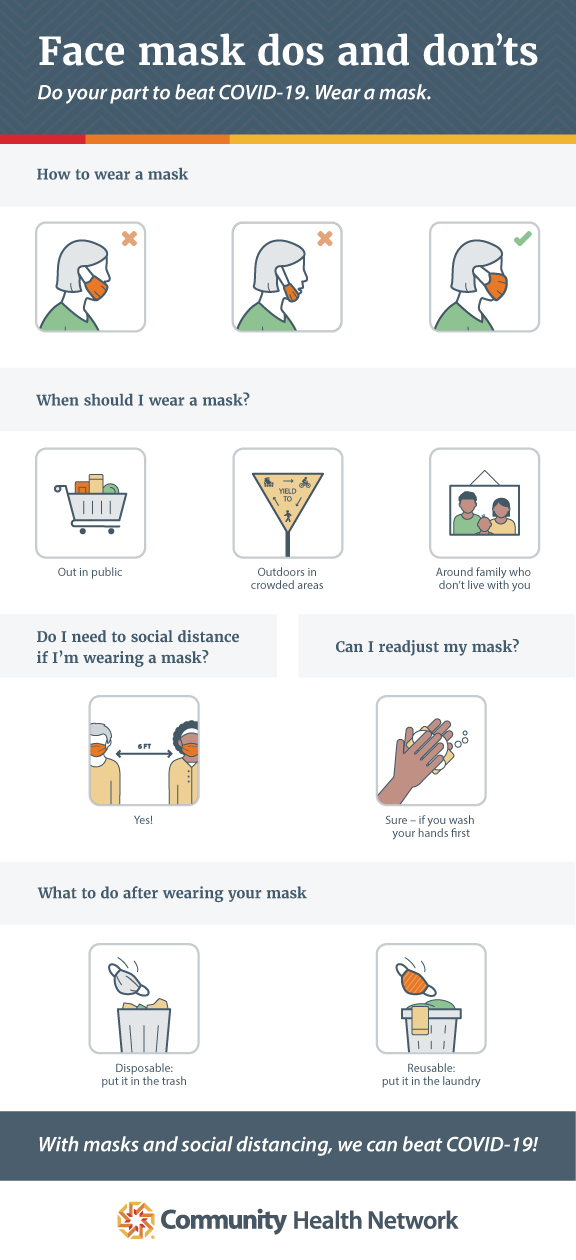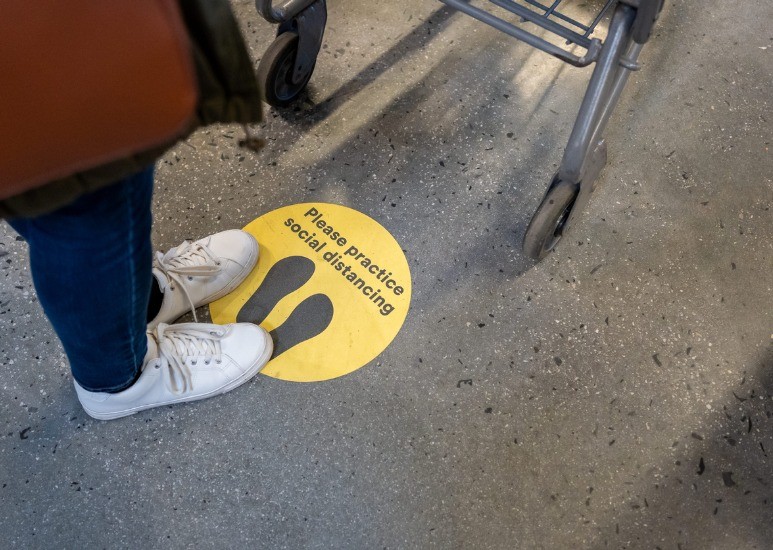As counties in Indiana enter stages of reopening, Governor Holcomb has allowed small social gatherings of increasing size:
- Stage 1 — gatherings of 10 people
- Stage 2 — gatherings of 25 people
- Stage 3 — gatherings of 100 people
- Stage 4 — gatherings of 250 people
- Stage 5 — unrestricted gatherings
These stages will fall on different dates depending on what county you live in. They are also subject to change based on evolving information about public health across the state and the nation.
In this FAQ we answer common questions about what reopening means for your health and safety during the COVID-19 pandemic.
Is it Safe to Gather Socially?
There are a lot of factors to consider about your health as our state begins to reopen.
First, the novel coronavirus hasn’t gone away. The virus spreads incredibly easily between people. You are still at the same risk for contracting the virus as you have been since this all began. That risk may increase if you gather in groups of 10, 25 and beyond.
Second, COVID-19 — the disease caused by the coronavirus — can carry severe health complications. For some people the symptoms may be mild, but for others it can be fatal. There is still no vaccine for COVID-19 and there will likely not be one for quite some time to come.
The best defense against COVID-19 is to not get sick in the first place. You can do this by continuing to practice precautions if you choose to go out in public:
- Wash your hands with warm, soapy water for 20 seconds several times a day
- Don’t touch your face
- Limit your potential exposure to the virus through social distancing
What is Social Distancing?
Social distancing means staying at least 6 feet apart from other people. As Indiana reopens, social distancing will continue to help us slow the spread of COVID-19.
You must continue to practice social distancing if you choose to gather in small social groups. Keep 6 feet between yourself and every other person — do NOT get any closer.
Why is Social Distancing Important?
The novel coronavirus travels through droplets of saliva and mucus. You produce those droplets every time you cough, sneeze, talk or even breathe. Social distancing can make sure your droplets don’t infect anyone else — and vice versa.
A study conducted by the Massachusetts Institute of Technology shows just how far those droplets can go. In the study, a violent sneeze sent saliva and mucus as far as 27 feet, and they stayed airborne for 10 minutes.
The CDC suggests that the further you are away from those droplets, the less likely you are to get infected. That’s why staying 6 feet away from others is a good line of defense.
How do Face Masks Help?
Face masks interrupt the trajectory of your sneeze or cough. Rather than traveling dozens of feet, your saliva and mucus get stopped by the cloth barrier over your mouth and nose. This video shows great side-by-side footage of how far those droplets go when you do and don’t wear a mask.
When you wear a mask, you’re helping your potentially infectious droplets stay away from other people. When other people wear a mask, they’re helping their own droplets stay away from you. Wearing a mask is a win-win for everyone.
Be sure to wear them properly by following the guide below:

I Don't Feel Sick. Should I Still Practice Social Distancing and Wear a Mask?
Yes. Social distancing and wearing a mask are the best ways to keep you and others safe.
Even if you don’t feel sick or show symptoms of COVID-19, you might still be carrying the coronavirus. You could be contagious. Other people can still get the virus from you — and their symptoms could be much more serious or potentially fatal.
Please consider your health and the lives of those around you. If you take the precautions of social distancing and wearing a mask, our state will be in a much safer place as we begin to reopen. For more information about COVID-19 and how to stay safe, read our COVID-19 FAQ.

